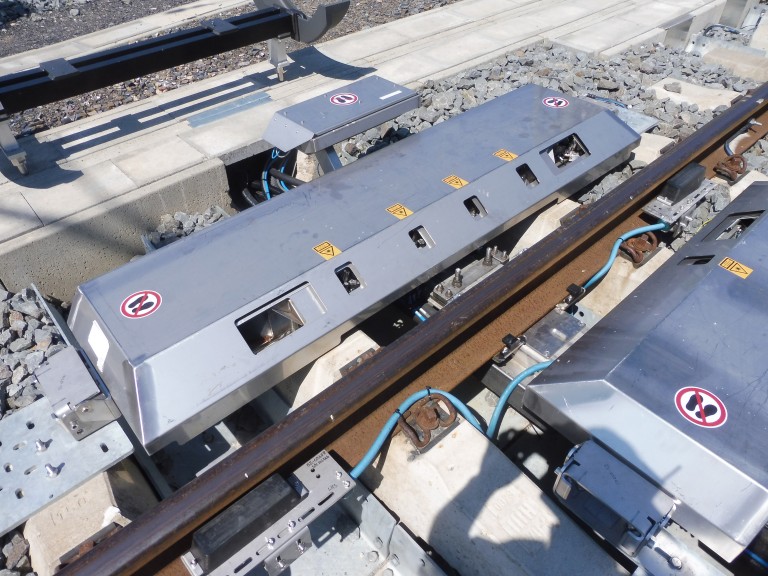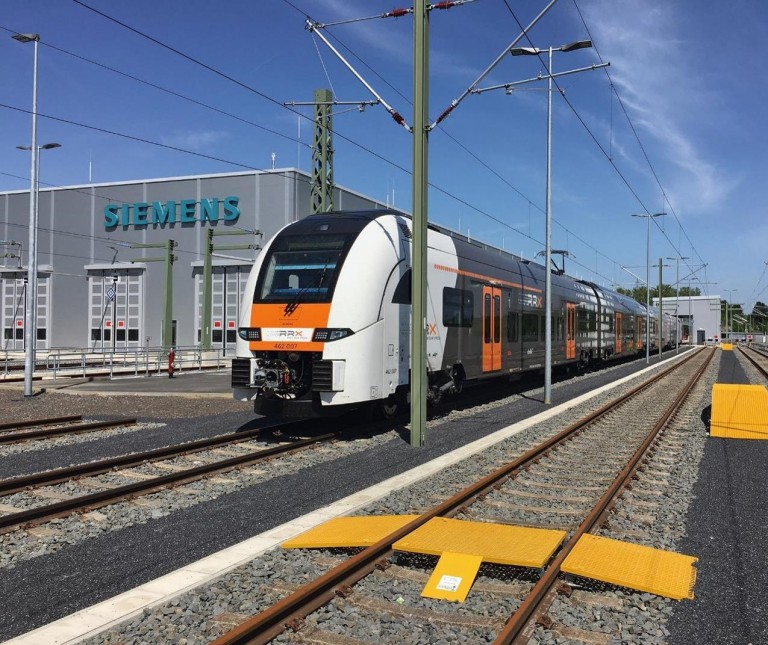Thanks to innovative solutions focusing on sustainability, availability and passenger comfort, the RRX is not only a means of locomotion but also much more – a travelling experience. A train with a feel-good factor.
Janina Schreiber, Subproject Manager RRX, Siemens Mobility

Since 2018, the operators of the Rhine-Ruhr Express (RRX) have been following a new approach for safeguarding their mobility services. They rely not only on Siemens trains of the Desiro HC type but also on intelligent maintenance and repair. The works are controlled via a platform developed by Siemens and are realized in an intelligent maintenance depot in Dortmund.
For this purpose, the 84 RRX trains deployed include a number of sensors that continuously send status data to the maintenance depot. This makes it possible to take measures and provide spare parts in advance. The problem can then be fixed quickly and smoothly as soon as the train arrives. In addition, calculated on the basis of the amount of work that is to be done, skilled workers are deployed so that the trains will be available for passengers on time the next day. Siemens Mobility thus ensures an availability rate of 99 percent and has been able to report significant improvements in punctuality.
Good to know
- The Rhine-Ruhr region with its around 10 million inhabitants and numerous transit lines is one of the largest agglomerations in Europe.
- For the RRX project, Siemens Mobility has developed its own platform that is used to realize this digitalized maintenance format.
- Since 2018, 77 trains have been handed over and maintained.


Interview with Stefan Hahn, Project Manager, and Sascha Guth, Head of Customer Service Rolling Stock, Siemens Mobility GmbH
How did you come up with the idea for your project?
The idea was to develop rolling stock that can be easily maintained and is energy efficient, offering benefits in terms of sustainability to customers, manufacturers and also the environment. Account was taken of all mechanical issues (lightweight design, aerodynamics) and energy consumption, and full use was made of digital connectivity with the individual systems. As a result, information on the condition of components can already be obtained while the train is moving and optimum use can be made of maintenance times and availabilities.
What challenges did you face during implementation?
We faced a large number of challenges. On the one hand, we had to develop the rolling stock by the required deadline and to the agreed specifications, on the other hand we had to complete the construction of the depot including the complete digital connectivity with the trains – both at the same time – to guarantee the punctual start of operations. And we had to comply with the requirement to design, for the first time ever, trains with such an intensive IT connection to the landside and to create a benefit for manufacturers, operators and passengers.
Where do you see your project in five years?
In five years, the developed, connected and digitalized maintenance system will guarantee stable, punctual and comfortable train operations and be a standard for future projects. The issue of digital, optimized services will have been evolved to raise comfort in the trains to the next level.
What is your advice for others who have a good idea and want to translate it into action?
Just do it!!! Do not allow your own doubts to distract you. Carefully consider the market requirements, question the benefit, pursue your goal with motivation and convince others of your idea.



